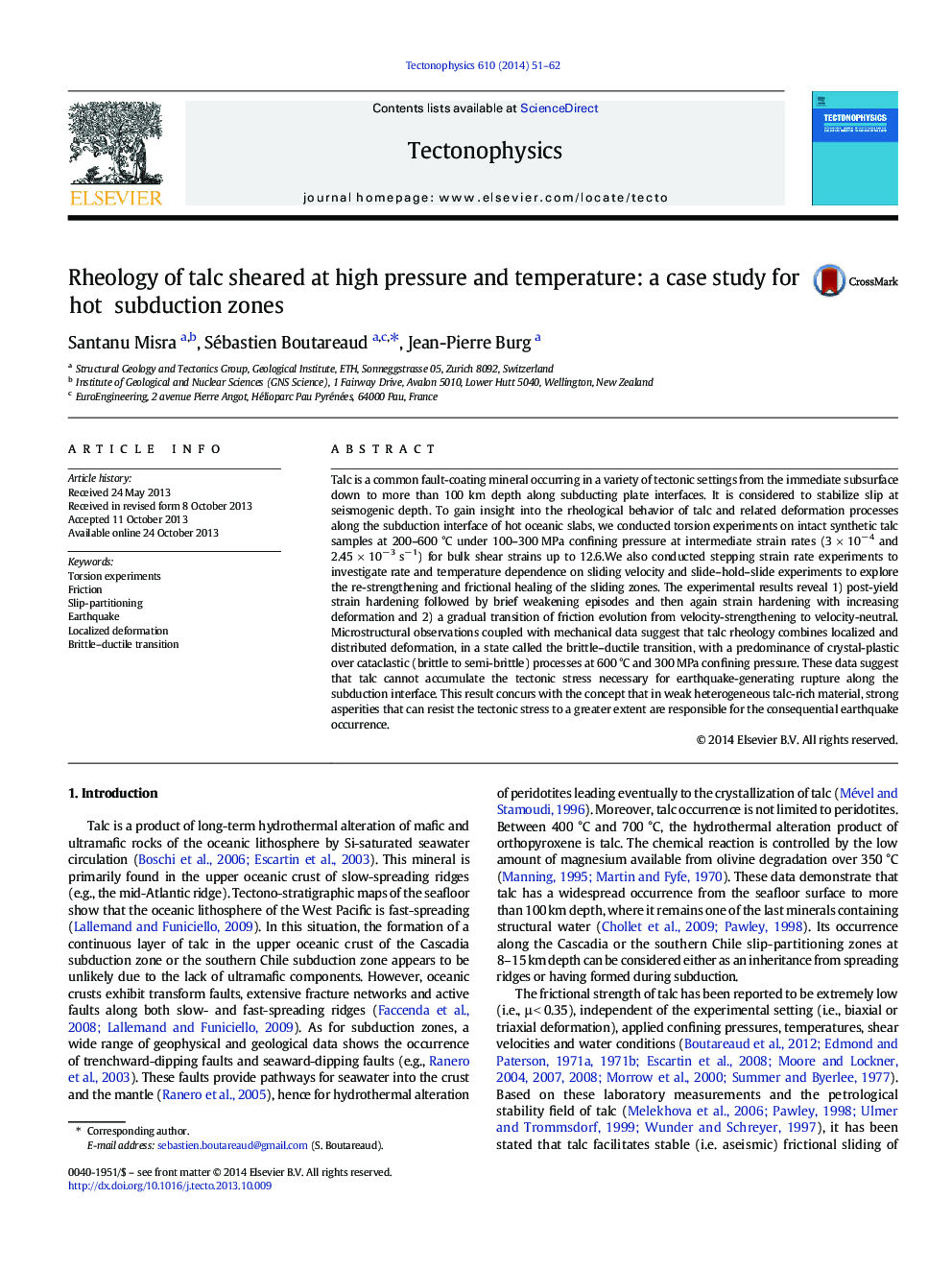| کد مقاله | کد نشریه | سال انتشار | مقاله انگلیسی | نسخه تمام متن |
|---|---|---|---|---|
| 4692057 | 1636777 | 2014 | 12 صفحه PDF | دانلود رایگان |
• Torsion tests of talc aggregate at P/T conditions simulating hot subduction zones.
• Rheology & friction data are reported with increasing strain, velocity & holding time.
• Microstructure development supports mechanical behavior.
• Strong asperities in weak talc-rich materials may explain the earthquakes occurrence.
Talc is a common fault-coating mineral occurring in a variety of tectonic settings from the immediate subsurface down to more than 100 km depth along subducting plate interfaces. It is considered to stabilize slip at seismogenic depth. To gain insight into the rheological behavior of talc and related deformation processes along the subduction interface of hot oceanic slabs, we conducted torsion experiments on intact synthetic talc samples at 200–600 °C under 100–300 MPa confining pressure at intermediate strain rates (3 × 10− 4 and 2.45 × 10− 3 s− 1) for bulk shear strains up to 12.6.We also conducted stepping strain rate experiments to investigate rate and temperature dependence on sliding velocity and slide–hold–slide experiments to explore the re-strengthening and frictional healing of the sliding zones. The experimental results reveal 1) post-yield strain hardening followed by brief weakening episodes and then again strain hardening with increasing deformation and 2) a gradual transition of friction evolution from velocity-strengthening to velocity-neutral. Microstructural observations coupled with mechanical data suggest that talc rheology combines localized and distributed deformation, in a state called the brittle–ductile transition, with a predominance of crystal-plastic over cataclastic (brittle to semi-brittle) processes at 600 °C and 300 MPa confining pressure. These data suggest that talc cannot accumulate the tectonic stress necessary for earthquake-generating rupture along the subduction interface. This result concurs with the concept that in weak heterogeneous talc-rich material, strong asperities that can resist the tectonic stress to a greater extent are responsible for the consequential earthquake occurrence.
Journal: Tectonophysics - Volume 610, 6 January 2014, Pages 51–62
